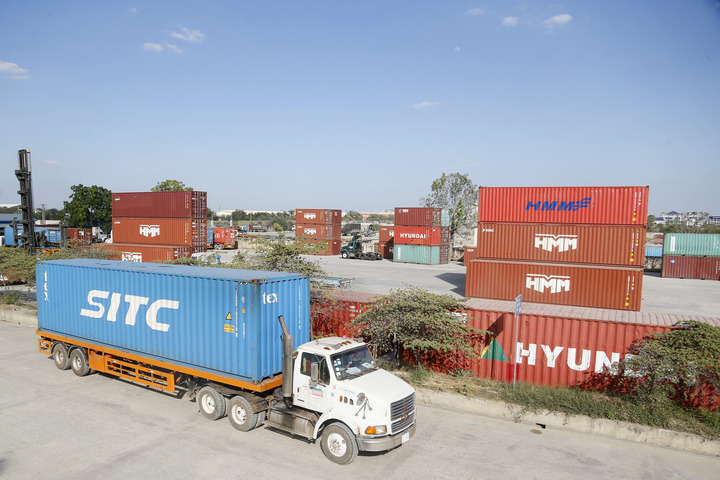New China-ASEAN FTA to inject impetus to economic and trade ties between China, ASEAN countries: expert

A lorry drives out of the Hong Leng Huor Dry Port on the western suburb of Phnom Penh, Cambodia on Jan. 13, 2022. (Photo by Phearum/Xinhua)
The construction of Version 3.0 of China-ASEAN Free Trade Area (FTA) is expected to inject new vitality into the economic and trade development between China and ASEAN countries, according to Xu Ningning, executive director of the China-ASEAN Business Council and Chairman of RCEP Industry Cooperation Committee.
Xu made the remarks at the first round of negotiation meeting on construction of Version 3.0 of China-ASEAN FTA conducted by relevant authorities of China and ASEAN countries as well as officials from the ASEAN Secretariat on February 7.
During the negotiation, the two sides held in-depth discussions on the procedural rules, organizational arrangements and work plans of the negotiations, and worked out a timetable and road map for follow-up negotiations.
The China-ASEAN FTA was initially proposed in 2000, aiming to tighten bilateral cooperation and development under the principle of higher level of opening-up.The fruitful achievements of the China-ASEAN FTA over the past 20 years are attributable to the solid efforts of China and ASEAN. In particular, the Belt and Road Initiative (BRI) has brought new vitality to the development of the FTA, said Xu.
He noted that China's proposal to build Version 2.0 and 3.0 China-ASEAN FTA reflects China's firm determination to implement a higher level of opening-up, as well as the common vision of deepening economic and trade cooperation between China and ASEAN.
The Version 3.0 of the FTA will deepen cooperation in digital economy, green economy and supply chain between China and ASEAN countries, and also advance the Asia-Pacific economic integration process, complement and promote the implementation of the Regional Comprehensive Economic Partnership (RCEP), and bring innovative incentives to the RCEP's regional opening-up and cooperation.


